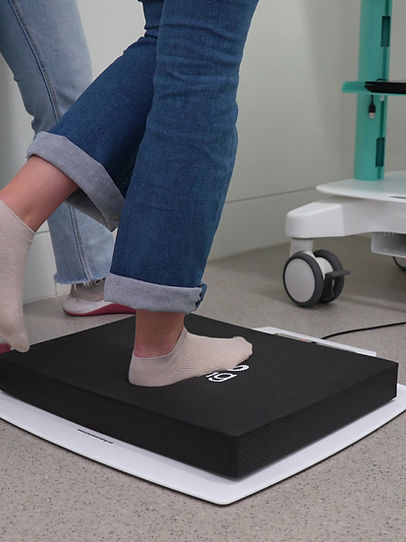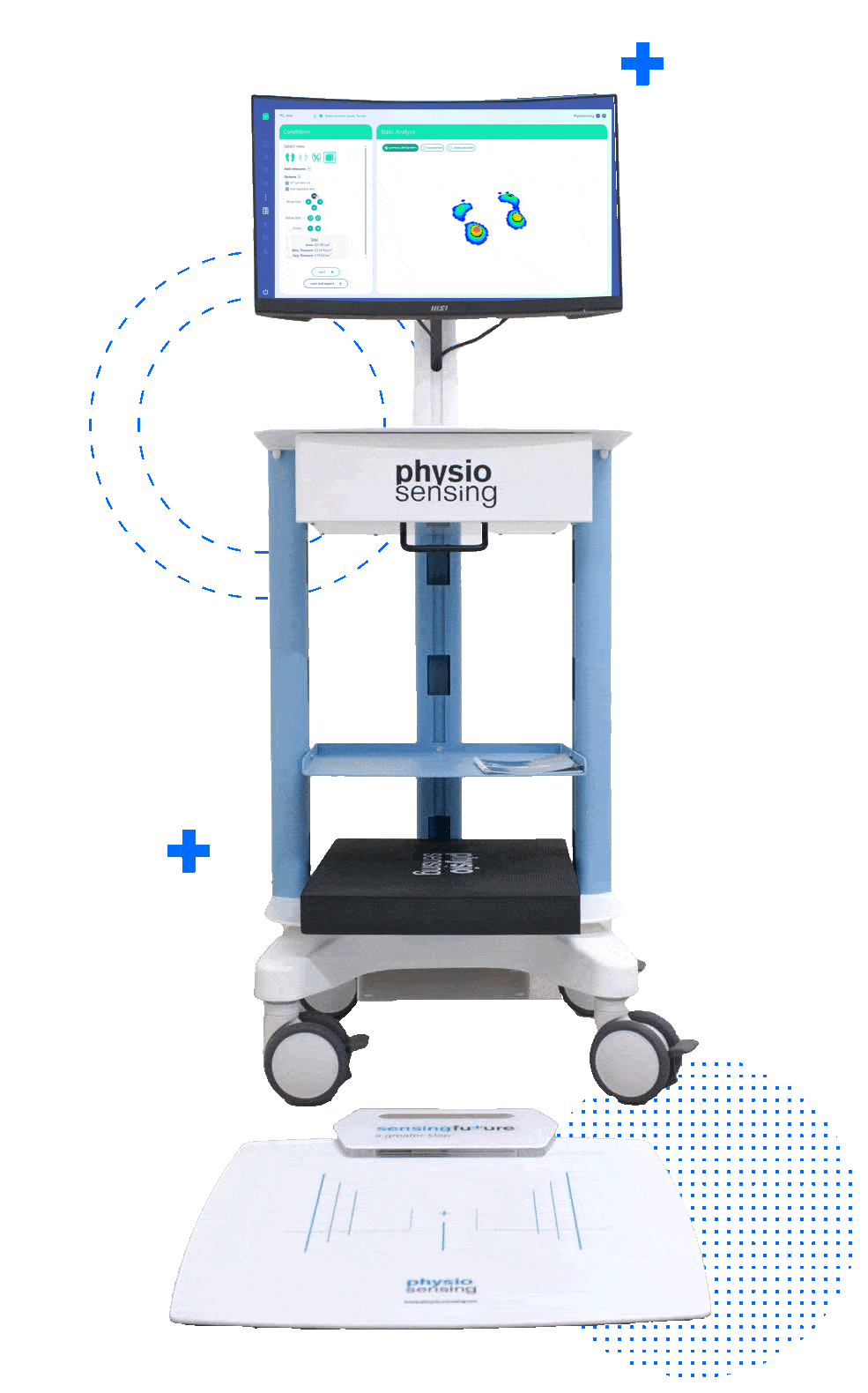
Because balance changes everything — mobility, confidence, and independence.
WHEN BALANCE MATTERS MOST
Balance disorders affect millions of people worldwide — from patients recovering after a stroke to older adults afraid of falling, or athletes rebuilding stability after injury.
The PhysioSensing Balance Rehab Station gives professionals the power to measure what truly matters: objective balance, sensory control, and postural stability.

When you can see progress, you can restore not just balance — but life.





WHY CHOOSE
BALANCE REHAB STATION?
For professionals who want science, not subjectivity.
12+ validated balance assessment protocols with automatic reporting
Limits of Stability & mCTSIB to assess voluntary control and sensory dependencies
Biofeedback exercises and games to engage and re-educate the brain
30+ posturography parameters under multiple sensory conditions
Sit-to-Stand & Unilateral Stance for functional symmetry analysis
PDF, Excel, and raw data export with clinic branding
Fall risk prediction backed by peer-reviewed evidence
Plantar pressure mapping & gait analysis for comprehensive evaluation
Plug & play setup with 2-year warranty and full technical support



DESIGNED FOR EVERY BALANCE CHALLENGE
From neurology to musculoskeletal rehab
— one platform fits all.
Neurological conditions:
-
Stroke, Parkinson’s, concussion, multiple sclerosis, peripheral neuropathies
Geriatrics & fall risk:
-
Dizziness, recurrent falls, age-related balance decline
Musculoskeletal rehab:
-
Post-hip prosthesis, knee injuries, ankle sprains, chronic instability
Everyday challenges:
-
Patients who feel unsteady, lose confidence in walking, or fear falling


Supported Assessment Protocols
-
mCTSIB (Modified Clinical Test of Sensory Interection on Balance)
The mCTSIB balance test evaluates vision, proprioception, and vestibular input in postural stability. Essential for detecting sensory integration deficits in rehabilitation.
-
Romberg Test
The Romberg balance test identifies neurological and vestibular deficits by comparing balance performance with eyes open and closed.
-
Body Sway (Posturography)
Comprehensive posturography that measures center of pressure movements under all possible condition combinations, delivering complete balance control analysis
-
LOS (Limits of Stability)
The Limits of Stability test measures dynamic balance control and fall risk by tracking how far patients can shift their center of gravity safely.
-
Fall Risk
Assesses fall risk by measuring sway velocity across standardized quiet-stance conditions (comfortable and narrow stance, eyes open/closed)
-
Weight Bearing Squat
Evaluates right/left load symmetry across knee-flexion angles (0°, 30°, 60°, 90°) to monitor lower-limb recovery and motor control during closed-chain tasks.
-
Rhythmic Weight Shift
Measures on-axis velocity and directional control as patients rhythmically shift their center of pressure in the AP/ML axes at slow, moderate, and fast.
-
Unilateral Stance
The Unilateral Stance test assesses single-leg balance and postural control, supporting fall prevention and neurological rehabilitation programs.
-
BESS (Balance Error Scoring System
Quantifies postural errors in three stances (double-leg, single-leg, tandem) on firm and foam surfaces with eyes closed; widely used in concussion management and sports medicine.
-
Dynamic Analysis (Gait)
Analyzes plantar-pressure distribution and center-of-pressure (COP) trajectory over one gait cycle to identify altered patterns, asymmetries, and foot-mechanics issues
-
Sit to Stand
Quantifies sit-to-stand performance (e.g., time, force/symmetry, stabilization) over repeated trials; instrumented STS metrics relate to fall risk and lower-limb strength in aging and neurologic rehab.
-
Static Analysis
Provides a single-frame plantar-pressure map and COP-based sway metrics (e.g., velocity, amplitude, area) to characterize quiet-stance postural control and weight distribution.
-
Total Balance Pro
A combined protocol (mCTSIB + LOS + STS) that integrates six key indicators—proprioception, vestibular/visual input, postural stability, lower-limb strength, reflexes/reaction time, and motor control.

Balance Biofeedback Training
The Balance Rehab Station offers clinical-grade balance biofeedback training with real-time visual feedback on posture and center of pressure. Patients can immediately see and correct their movements, improving postural control, stability, and motor learning. This accelerates rehabilitation progress and provides clinicians with objective, measurable results for every session. The Balance Basic offers clinical-grade balance biofeedback training with real-time visual feedback on posture and center of pressure. Patients can immediately see and correct their movements, improving postural control, stability, and motor learning. This accelerates rehabilitation progress and provides clinicians with objective, measurable results for every session.

-
Balance and Stability
-
Figure and Paths
-
Visual Stimulus
-
Load Charts
-
Protocol Training
-
Load Charts

Balance Interactive Games
-
Pong
-
Ball Balance
-
BART
-
2D Game
-
Slim Pong & Slim Run
-
Space Sway
-
Break your Balance
Engaging interactive balance games for rehabilitation make therapy more enjoyable and effective. Patients practice essential balance skills in a game-like environment, which increases motivation, adherence, and training frequency. Clinicians benefit from structured, trackable progress while patients gain confidence through fun, goal-oriented balance training.

Get a Quotation
Get started now! Please fill out the form to start the conversation.
After submission, we'll email you.
Don't forget to check your spam/junk folder.
